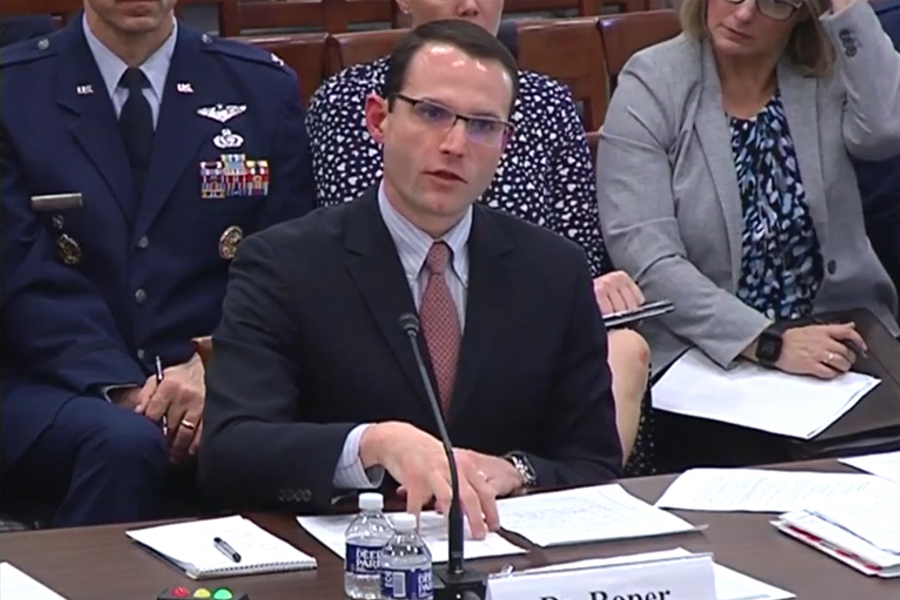Air Force acquisition chief Will Roper said March 11 the Air Force is still working on promising research despite a largely stagnant science and technology budget request for fiscal 2021 that is worrying some lawmakers.
As the U.S. looks to develop advanced military systems like improved hypersonic weapons and enabling technologies like artificial intelligence faster than Russia and China, Roper lamented that the service’s research fund lost ground to more pressing priorities. Nuclear modernization, joint all-domain command and control, and the effort to stand up a Space Force pulled money and resources away from basic research in the 2021 request released last month.
“Sometimes the innovation voices did not win at budget closeout,” Roper said. “[There are] a lot of things on the Air Force’s plate … and unfortunately when we had to make the budget balance, we had to look for areas to take risk.”
Congress in fiscal 2020 allocated $35.2 billion for USAF research and development. The Department of the Air Force, which includes the Space Force, asked for $37.3 billion for R&D in 2021.
Rep. Jim Langevin (D-R.I.), chairman of the House Armed Services intelligence and emerging threats and capabilities subcommittee, noted that planned Air Force spending on basic research and advanced technology development both drop by about 8 percent in the 2021 request.
Roper agreed that the proposed S&T plan can erode the Air Force’s technological advances over time, but pointed to progress in classified programs.
“As we think about competing against countries like China and Russia, if we have foundational research that publishing it would simply let our adversary jump ahead, it’s great that we have researchers that are willing to work with us at a classified level, not publish their research, and help us have a military edge,” Roper said. “We made a sizable movement in that portfolio.”
He brought up two other eye-catching, science fiction-like projects underway as well. One is developing small sonogram machines akin to the handheld tricorder in “Star Trek”—a sensing, computing, and recording device that analyzes the surrounding environment and can help diagnose illnesses. Another program is pursuing samarium nickel oxide, which “decouples the temperature of that material from its thermal emission, paving the way for what could be a cloaking device,” Roper said.
Military officials blame the Defense Department’s congressionally mandated $705 billion spending cap in 2021 for forcing tough tradeoffs between priorities, though Langevin doesn’t seem to buy that argument. He worries DOD isn’t investing enough in the building blocks of technological breakthroughs despite its other needs.
DOD’s “defense-wide [research and engineering] budget was even $245 million less than last year’s request,” Langevin said. “How did the department walk away from its commitment to protect the science and technology budget?”
Pentagon research chief Mike Griffin pushed back on the allegation, saying the department highly values its S&T account.
“We don’t have topline growth and we have many, many priorities. As we went through our budget work, I in fact was an advocate in R&E for S&T topline growth,” Griffin said. “In an environment where we didn’t have any bad programs, we were inevitably, in order to close our budget, we were going to have to make priority choices and we did.”
Army S&T dollars grew by 6 percent and the Navy’s grew by 1 percent, while Air Force S&T remained flat compared to the 2020 request, Griffin said. OSD took a 4 percent cut as it pursues about a dozen modernization priorities, from quantum computing to fifth-generation wireless connectivity to directed energy.
“The parsing of our S&T budget was done across the department very carefully,” Griffin said. “We did the best that we thought we could.”
